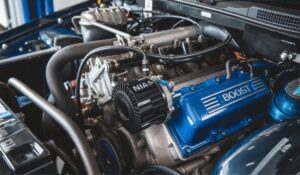Introduction: Understanding dB Levels of Electric Leaf Blowers
How much dnb does electric leaf blower produce Electric leaf blowers are popular for yard maintenance, known for their convenience and eco-friendliness. However, many people are concerned about how much noise these tools produce, measured in decibels (dB). The noise level of a leaf blower can affect not only the user’s hearing but also the surrounding environment. In this article, we will explore how much dB electric leaf blowers typically produce, why it matters, and how to reduce noise exposure. Whether you’re choosing a new blower or already own one, understanding decibel levels is important for both safety and comfort.
What Is dB, and Why Does It Matter?
Decibels (dB) are the units used to measure sound intensity. On the dB scale, higher numbers represent louder sounds. The scale is logarithmic, meaning an increase of 10 dB represents a sound that is 10 times more intense. For example, a normal conversation occurs at around 60 dB, while anything over 85 dB can start to affect your hearing. Leaf blowers, especially powerful electric models, can produce noise levels that exceed this threshold. This makes it crucial to know the dB rating of the blower you’re using to ensure you’re taking proper precautions, like wearing ear protection or limiting exposure.
How Much dB Does an Electric Leaf Blower Produce?
On average, electric leaf blowers produce between 65 to 85 dB. The exact noise level depends on the model, motor power, and speed settings. Some quieter models produce around 65-70 dB, which is considered safe for prolonged use without hearing damage. However, more powerful models can reach up to 85 dB or even higher at maximum speed. These higher levels can pose a risk of hearing loss if you are exposed for long periods. It’s important to check the manufacturer’s specifications for the dB rating when purchasing an electric leaf blower to choose one that fits your noise tolerance and safety needs.
Comparison: Electric vs Gas-Powered Leaf Blowers in Terms of dB
Gas-powered leaf blowers are known for being louder than electric models, often reaching noise levels between 90 and 100 dB. This is significantly louder compared to electric blowers, which tend to stay below the 85 dB mark. The lower dB levels of electric models make them a more appealing option for those living in noise-sensitive areas or wanting to reduce hearing risk. Additionally, electric leaf blowers are often quieter due to the absence of an internal combustion engine, making them more environmentally friendly and easier on the ears during long periods of use.
How Noise Levels Affect Hearing
Exposure to noise levels above 85 dB for extended periods can result in permanent hearing damage. Prolonged exposure to sounds between 85 and 100 dB, common in both gas and electric blowers, can lead to hearing loss if proper precautions aren’t taken. It’s recommended to limit exposure to these noise levels and always wear hearing protection, such as earplugs or noise-canceling headphones. Electric leaf blowers, while quieter than gas models, can still pose a risk if used continuously without breaks. Always be aware of how long you’re using the blower and take necessary steps to protect your ears.
Tips for Reducing Noise When Using an Electric Leaf Blower
To minimize the impact of noise from an electric leaf blower, start by selecting a model with a lower dB rating. Look for blowers labeled as “quiet” or with dB levels below 70, as these are better for reducing noise exposure. Additionally, using the blower at lower speed settings can significantly decrease noise output. Wearing ear protection is another essential precaution. Taking regular breaks during use can also help reduce the overall impact of noise. Finally, using the blower at times when noise will disturb fewer people, such as midday, can also mitigate the negative effects.
Choosing a Quieter Electric Leaf Blower

When shopping for an electric leaf blower, noise level should be a key consideration, especially if you’re concerned about dB levels. Many manufacturers now produce quieter models with advanced noise-reduction technology. Look for models specifically marketed as quiet or low-noise, often producing 65 dB or less. Reading customer reviews can also provide insights into the real-world noise levels of different blowers. In addition to noise, consider other factors like airspeed and battery life to ensure you’re choosing a model that balances quiet performance with effective operation.
Environmental and Community Considerations
How much dnb does electric leaf blower produce: Noise pollution from leaf blowers is a growing concern, especially in suburban and urban areas where neighbors live close to one another. While electric blowers are generally quieter than gas-powered ones, they can still contribute to environmental noise. Some cities have even implemented restrictions on the use of leaf blowers, limiting their operation to certain hours. By choosing an electric model with lower dB levels, you can contribute to reducing noise pollution in your community. Always be mindful of when and where you use your blower to minimize disruption to others.
Conclusion
How much dnb does electric leaf blower produce: In conclusion, understanding how much dB an electric leaf blower produces is essential for maintaining hearing safety and reducing noise pollution. While electric blowers are generally quieter than gas-powered models, they can still produce noise levels that require caution. By choosing a quieter model, wearing ear protection, and using the blower responsibly, you can enjoy the convenience of an electric leaf blower without harming your ears or disturbing your neighbors. Always check the dB rating before purchasing and opt for models that balance power with low noise output.
FAQ
Q1: What is dB, and why is it important for electric leaf blowers?
dB stands for decibels, a unit used to measure sound intensity. It’s important for electric leaf blowers because higher dB levels can lead to hearing damage. The louder the blower, the more care you need to take to protect your ears, making it crucial to understand the dB level of the leaf blower you’re using.
Q2: How loud are electric leaf blowers compared to gas-powered blowers?
Electric leaf blowers are generally quieter than gas-powered ones. Electric blowers typically produce between 65 and 85 dB, while gas-powered blowers can exceed 90 dB. This difference makes electric models a more eco-friendly and hearing-safe option.
Q3: What dB level is considered safe for prolonged use?
Noise levels below 85 dB are considered safe for prolonged use without hearing protection. However, it’s recommended to wear ear protection when using devices that generate noise around 80 dB or higher, as prolonged exposure can still harm hearing.
Q4: Are there electric leaf blowers designed to be quieter?
Yes, many manufacturers offer quiet or low-noise electric leaf blowers, often producing below 70 dB. These models are great for minimizing noise pollution while still offering effective performance for yard work.









































